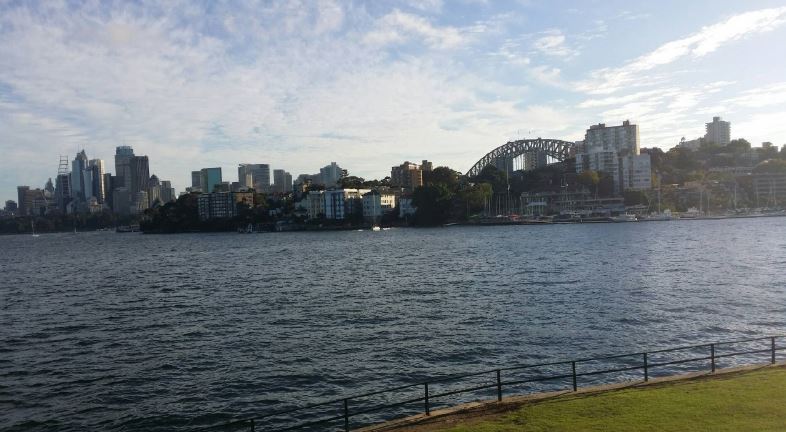
Uploaded on 2017-06-04 by Erika Suzuki
1. Check the temperature differences in US cities <New York> Up to 20° higher in city than near by rural area. Average 2.7° hotter in city in summer more than rural area. <San Diago> Up to 23° hotter in the city than nearby rural areas. -0.6° in city in summer cooler than rural areas. 23 days more above 32.22° each year, than rural areas. <Miami> Up to 17° hotter in city than nearby rural areas. 1.7° summers are hotter than in rural areas. 15 days above 32.22° each yea than rural areas. 2. Which are the main UHI effects that you can identify in your area? What I found interesting in Sydney is actually Western Sydney is hotter than CBD. As CBD is surrounded by water, that geography gives cooler winds into the city and UHI effects is more obvious in Western Sydney and inner Sydney. I remember my colleague who lives in Liverpool which is western Sydney 40min by car and 1.5 hours by train from CBD) showed me his i-phone to show the temperature difference between city and Liverpool. 40° in Liverpool and 35° in city. there was 5° difference in one of the most hottest summer day. According to NSW Greening Australian Report, the gap between coastal Sydney temperatures and western Sydney temperatures has widened. <Sydney> Maximum temperatures increased to 0.28°. Temperature of a hot January day increased to 0.19°. Number of very hot day (above 35°) per year increased to 22% <Western Sydney> Maximum temperatures increased to 0.65°. Temperature of a hot January day increased to 0.86°. Number of very hot day (above 35°) per year increased to 250 % A Image attached are city view from North side (Cremorne Point) and Mosman which is next suburb from where I live. As you can see CBD is surrounded by water and Mosman is also facing bays and water. I couldn't find data of Mosman temperature however it must be much cooler than inner western Sydney. Also my area is not attached to coast and up the hill on north Sydney. In summer, wind comes from south east so actually my apartment doesn't get breeze during summer and definitely feel warmer than Mosman area even though it is only a next suburb. 3. Which are the measures you would propose? I am sure that there are thousands of ways to reduce UHI. In NSW website they add increasing tree cover as street trees, Using light colored roof, Minimize energy use, and etc as an example of solutions. I think in Australia we need stricter building code and standard towards UHI. Air leakage is the one of them, Australian houses and building is not designed or built to cool or warm with air conditions and sealing between doors and windows are terrible. My apartment for example. entry door is no transition and door leave is 5-10mm off from the floor finish. According to ALMA (Air Leakage Measurement Australia), Australian buildings are very leaky. More than 30 % of building energy is often wasted. We need to design more energy efficient and passive buildings so that users of the building can stay comfortably without wasting a lot of energy. 4. Is UHI effect concerning policy making in your area The city of Sydney council is changing colour of pavement from dark to light around Chippendale, including 600 sqm section of Myrtle street. Also using other techniques such as increasing the tree canopy by 50 % by 2030, as well as installing solar panels and LED lighting. Council is seeking a 70 % reduction in its energy use over the next 15 years. Also looking my country Japan, The Tokyo Metropolitan Government seems pretty active to reduce UHI and proceeding with a greening project of metropolitan government buildings. As part of the project it has planted trees on the rooftop of the Tokyo Metropolitan Assembly Building and installed a solar-power plant. In construction and standard, new public facilities of 250 square meters or more builders must submit a rooftop greening plan and completion report. For new private facilities the threshold is 1,000 square meters. If the plans do not meet the standards, the Tokyo Metropolitan Government will require a revised plan. I think this requirements are really important and having a standard for new buildings is essential to reduce UHI effect. Especially it is saying that population in Sydney will be double or triple by 2050. To keep the city cool, we have to start testing and changing the way we build our city. ------------------------------------------------------------------------------------------ <Reference> https://www.parliament.nsw.gov.au/committees/DBAssets/InquirySubmission/Summary/39702/08%20-%20Greening%20Australia.pdf http://airleak.com.au/ http://www.cityofsydney.nsw.gov.au/vision/towards-2030/sustainability/carbon-reduction/urban-heat-island https://www.businessinsider.com.au/sydney-is-changing-the-colour-of-roads-to-try-cool-down-the-city-2014-6 http://www.japanfs.org/en/news/archives/news_id027856.html